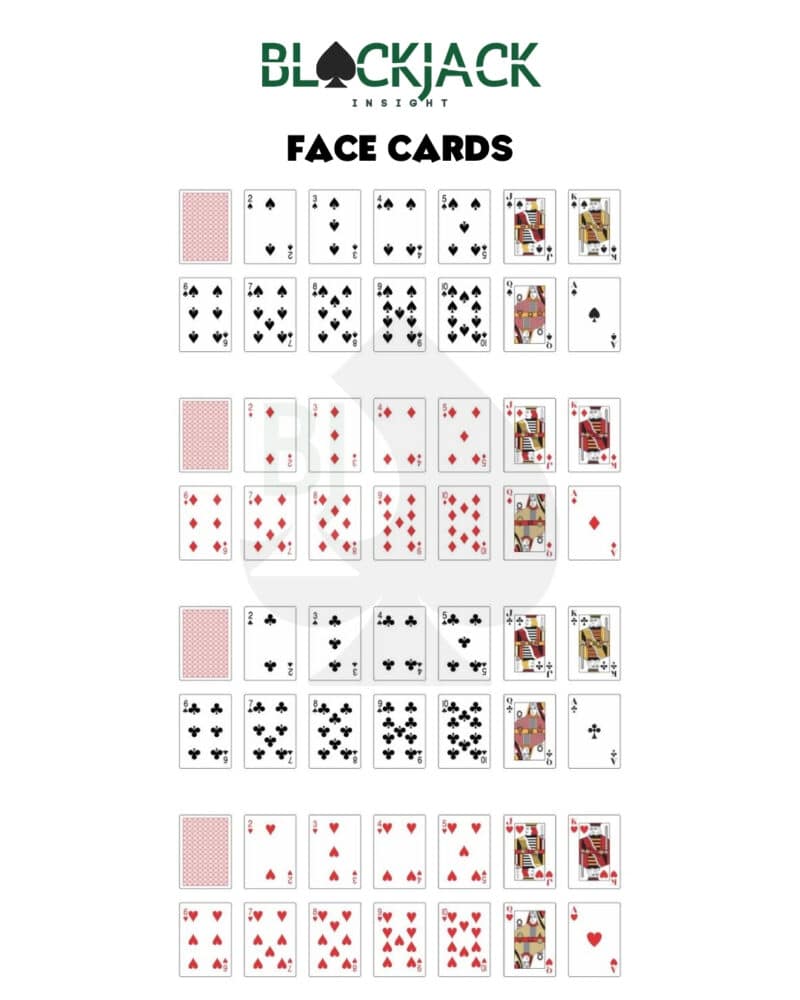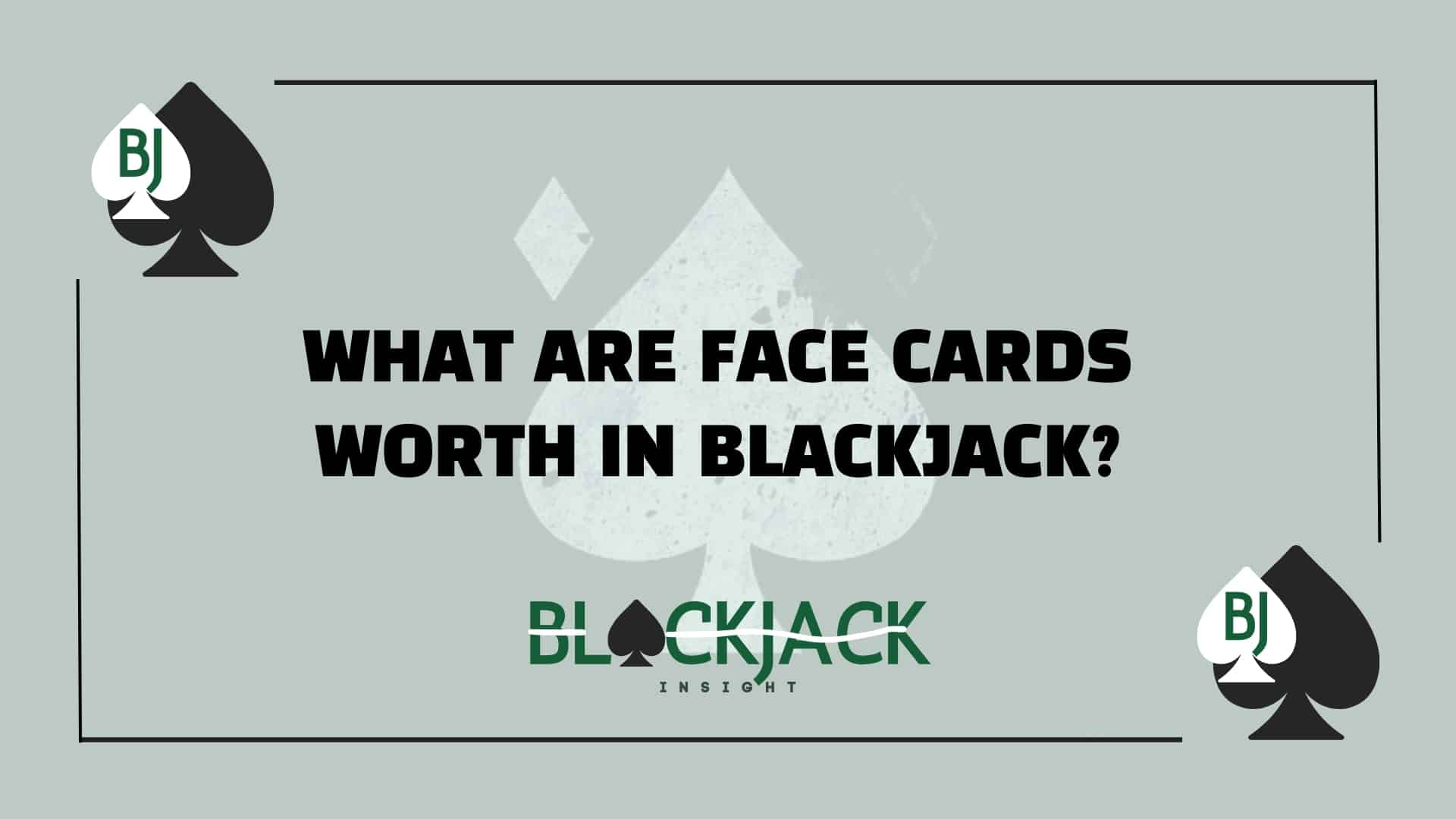What Are Face Cards Worth In Blackjack?
Table Of Content
- Worth of Blackjack Face Cards
- Why Are Face Card Values So Important in Blackjack?
- The Role of Face Cards in Blackjack Gameplay
- Is an Ace a Face Card in Blackjack?
- Face Card Order in Blackjack
- Can You Split a 10 and a Face Card in Blackjack?
- Player Psychology and Face Cards
- My Favorite Face Card Moment
- FAQs
What are face cards worth in blackjack? Honestly, if I had a dollar for every time I’ve heard that question at a casino table, I might not even need to play blackjack anymore.
I get it. The game can feel a little intimidating when you’re first starting out. Everyone else at the table seems to know exactly what they’re doing while you’re still sitting there wondering, “Wait… how much is a face card in blackjack again?”
No shame in that at all. In fact, every single blackjack player — including me — was confused by this stuff once. But the good news? Blackjack face card values are actually super easy to learn. Way easier than people make it sound.
And once you understand how much face cards are worth in blackjack — and why they matter so much—you’ll never hesitate again when a Queen, King, or Jack lands in front of you.
Worth of Blackjack Face Cards
In Blackjack, face cards—Jack, Queen, and King—are each worth 10 points. This uniform value makes them distinct from numerical cards (2–10) and the versatile Ace (1 or 11).

Why Are Face Card Values So Important in Blackjack?
Here’s the thing most beginners don’t realize right away — there are a lot of ten-value cards in the deck.
Think about it. In a single deck of blackjack, you’ve got four Jacks, four Queens, four Kings, and four actual tens. That’s sixteen ten-value cards out of fifty-two. That’s nearly a third of the entire deck working like a magnet for big hands.
This is why players yell things like “Monkey!” at the table when they want a face card to show up. It’s just fun slang for “Give me a ten!”—usually after doubling down or sitting on an 11.
Believe me, I’ve shouted, Monkey! myself more times than I can count, especially after getting dealt a pair of eights and splitting them. Nothing feels better than watching a face card land right where you need it.
The Role of Face Cards in Blackjack Gameplay
When it comes to gameplay, face card values in blackjack show up constantly. They shape strategy, betting decisions, and whether or not you should hit, stand, double down, or split.
Let’s say you’re sitting on a total of 11. Hitting is a no-brainer because, thanks to the number of ten-value cards floating around, there’s a high chance of landing a face card. That turns your 11 into a beautiful 21.
But face cards also impact what the dealer might have. If the dealer is showing a 6, you might stand on a lower total like 12 or 13, hoping the dealer busts by pulling a ten-value card or two.
Understanding the face card value in blackjack isn’t just trivia — it’s how you survive at the table.
Is an Ace a Face Card in Blackjack?
Now this is where people get tripped up all the time.
No — an Ace is not a face card in blackjack. I can’t tell you how many times I’ve heard someone ask, “Is Ace a face card?” And honestly, I get why the confusion exists. The Ace is special, but it’s not a face card.
Face cards are strictly Jacks, Queens, and Kings. That’s it.
The Ace is in its own little category. It’s actually more powerful than a face card because its value can change depending on what helps your hand the most. In blackjack, an Ace can be worth 1 or 11 — and that flexibility is why every player loves seeing an Ace come their way.
Face Card Order in Blackjack
Another question I’ve heard from curious beginners is about the face card order. Like, is a King worth more than a Queen? Is Jack weaker somehow?
Nope. In blackjack, the face card order doesn’t matter at all. Whether you’ve got a Jack, Queen, or King in your hand, it’s worth ten. No ranking, no power difference — just a straight ten points every time.
Can You Split a 10 and a Face Card in Blackjack?
Great question — and one that pops up often at the table.
Yes, in blackjack, you can split a 10 and a face card because, technically, they have the same value. Splitting tens (or a ten and a face card) is allowed at most tables, unless some rare house rule says otherwise.
Now, should you split tens and face cards? That’s a whole other discussion.
Personally, unless you’re counting cards or know something most players don’t, splitting tens is usually a bad idea. You’re sitting on 20 — one of the strongest hands in blackjack. Breaking that up for a chance at two weaker hands? Not my style. However, each player has a unique strategy for splitting cards in blackjack.
Player Psychology and Face Cards
Few moments at the Blackjack table are as exciting as drawing a face card. It’s the difference between a weak total and a commanding hand. However, this anticipation can sometimes lead to hasty decisions.
Common Pitfalls:
- Overvaluing Face Cards: While two face cards for a total of 20 is a strong hand, it doesn’t guarantee a win. I’ve seen players stand too confidently on 20, only to lose to a dealer’s Blackjack.
- Chasing a Face Card: Some players keep hitting, hoping for that elusive face card, even when basic strategy advises otherwise.
My Favorite Face Card Moment
There’s one hand I’ll never forget. I was playing at an old casino in Reno, sitting next to a guy who clearly didn’t understand blackjack rules very well. The dealer dealt the cards, and the tension at the table started to rise.
You could almost hear the collective groan around the table. The dealer pulls a 10 and a 5, landing on 21. Meanwhile, the guy’s two new hands both bust. It was a painful lesson in what not to do just because face cards look flashy.
At the end of the day, blackjack face card values are the easiest part of the game to remember. But don’t underestimate how crucial they are for playing smart.
Remember, in blackjack, face cards are always worth the same — ten points, every time. No tricks. No rankings. No strange house rules.
If you understand how many face cards are in the deck, grasp their impact on the game, and respect the power of an Ace, you’re already ahead of many casual players.
Next time you sit down at a table and wonder if that Jack or Queen has some hidden significance beyond its value, just relax, smile, and remember — it’s worth ten.
And sometimes? That ten is all you need to win big.
FAQs
1. Are face cards dealt differently from numeric cards in any Blackjack variant?
While face-down “pitch” games may visually handle all cards differently, standard Blackjack rules treat face cards the same as numeric cards for dealing procedures. The only real difference is in their 10-point value once they hit your hand.
2. Do superstitions about face cards “clumps” have any basis in reality?
Not really. Blackjack decks are shuffled (manually or by machine) to ensure randomness. While you may occasionally see several face cards in a row, it’s simply a result of normal probability—our brains just remember the unusual “clumps” more than ordinary distributions.
3. Does having multiple face cards on the table affect the dealer’s behavior?
No. Dealers must follow a strict set of rules—such as hitting until they reach at least 17—regardless of how many face cards are in play. The presence of face cards doesn’t change the dealer’s required actions, though it may influence players’ strategic decisions if they’re keeping track of what’s already been dealt.



